NEW YORK -- The demand and enthusiasm for Korean food in New York City have been recently growing steadily among New York foodies.
Kimchi, the quintessential Korean side dish, pickled and spiced cabbage, is now being sold in common bodegas as well as at larger supermarkets such as Whole Foods Market and Trader Joe’s.
One of the reasons for Korean food’s success is contributed to its appeal to both vegetarians and meat-lovers alike -- with the healthier, vegetarian dishes and with famous barbecue experience.
This growing awareness for Korean food allows chefs and restaurateurs in New York to experiment with different approaches, and now New York City offers a wide variety of Korean food, ranging from authentic to the more nouveau styles.
As a Korean-American who cannot live a single day without kimchi, being able to experience this trend of nouveau Korean food has been a real treat.
If you love Korean food and are open to more unique experiences in NYC, here are the five most innovative Korean restaurants in NYC you do not want to miss.
1. Jungsik
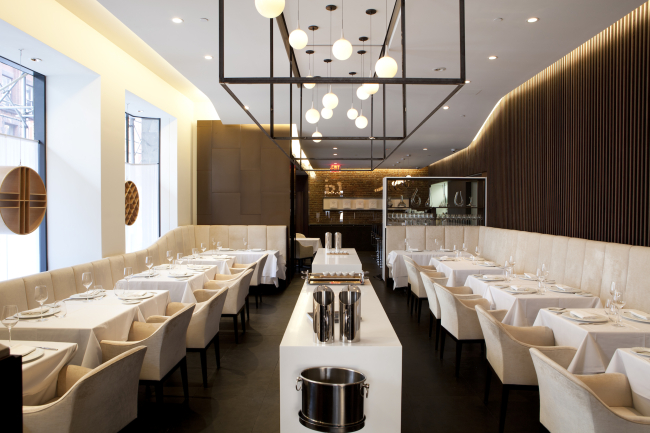
Jungsik Yim, chef-owner of Jungsik, is a Culinary Institute of America graduate who has spent his apprentice in the kitchens of Bouley and Aquavit. Here, Chef Yim introduces a reconstructed Korean cuisine through a more modern and French style.
Located between Hudson St. and Staple St. in the heart of Tribeca, the restaurant’s symmetrical, minimalistic, white decor allows for a more structured focus on experiencing the food itself, and with the immaculate service provided by the staff, and also by the general manager, Kyungmoon Kim, also a CIA alumni, the overall 9-course meal is truly a fascinating experience.
Many chefs run into the challenge of plating Korean food in a simple, elegant way, and Chef Yim has brilliantly overcome this challenge by deconstructing the realm of classic Korean plating, and has recreated his dishes in a French infused style, yet retaining the essential Korean flavors of every dish.
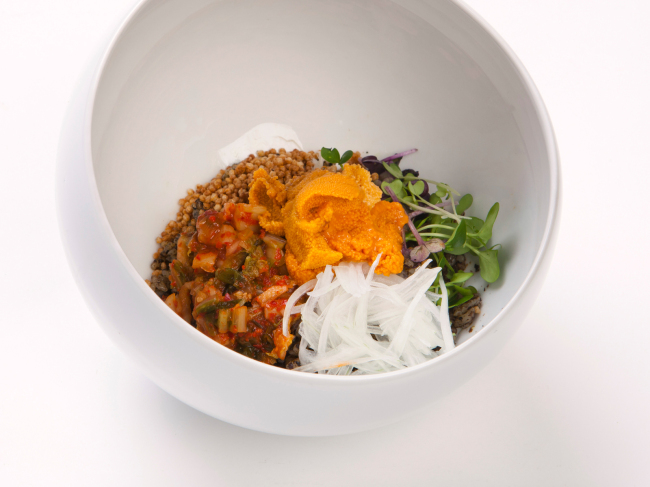
The most popular dish is the Sea Urchin Rice which sits on a seaweed puree resting on top of the lightly fried quinoa. The chopped kimchi along with the seaweed puree balance the thick flavors of the fresh sea urchin and the crispy quinoa.
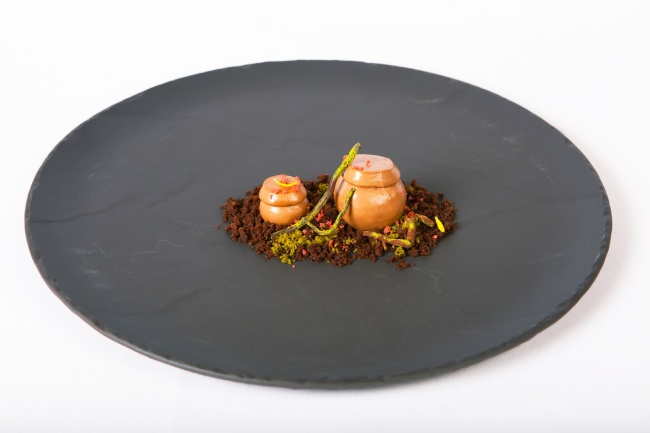
Also, make sure to try Jungsik’s signature dessert, “Jang dok”, a very thick hazelnut cremeux that is shaped like the jangdok earthenware commonly used in Korean homes to be buried underground or left outside in a cool area for food to be kept fresh and well-preserved.
If you are looking to have a rare fine-dining experience at a Michelin two-star restaurant in New York City with your loved ones for a special occasion or if you just want to treat yourself, this restaurant is highly recommended for your next visit in NYC. For those who live in Korea, do not worry -- Chef Yim’s first restaurant is located in Seoul, which also has been nominated as one of the best restaurants in Asia.
2. Danji
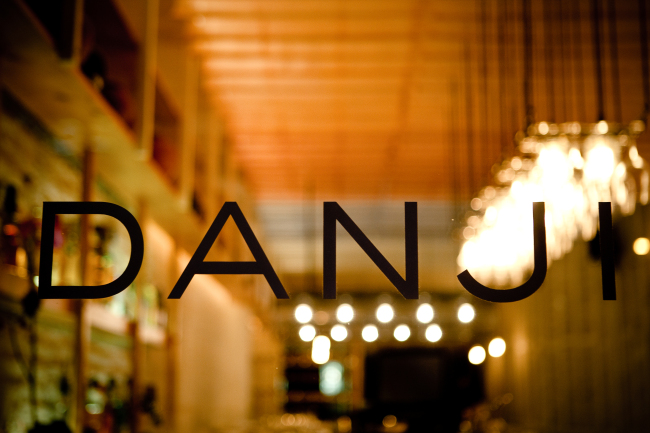
Chef Hooni Kim, currently a celebrity judge on the third season of Master Chef Korea on Olive TV, is the chef-owner of Danji, a one-star Michelin restaurant located in Hell’s Kitchen.
Danji is the name of a common earthenware used among the more traditional Koreans, a smaller form of hangari. The restaurant’s name reflects the tapas style of smaller portions, and also to the overall theme of the coexistence of modern and traditional Korea.
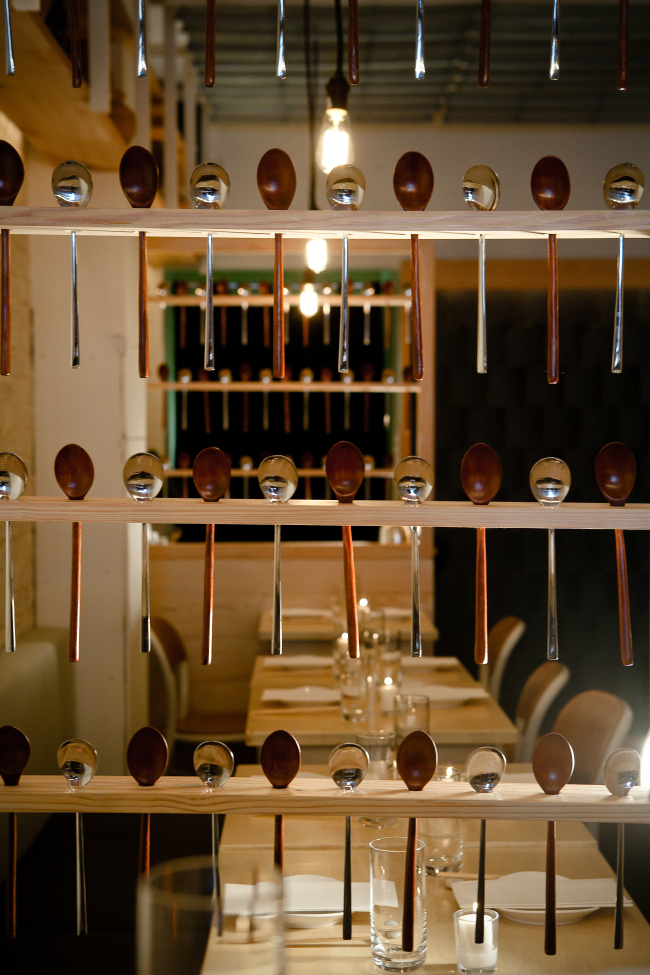
The decor inside also resonates to this theme, with warm brown tones and modern lighting, with hints of traditional Korean remnants -- danji jars that sit above the polished wooden bar and the walls of the wooden and silver spoons used as room dividers.
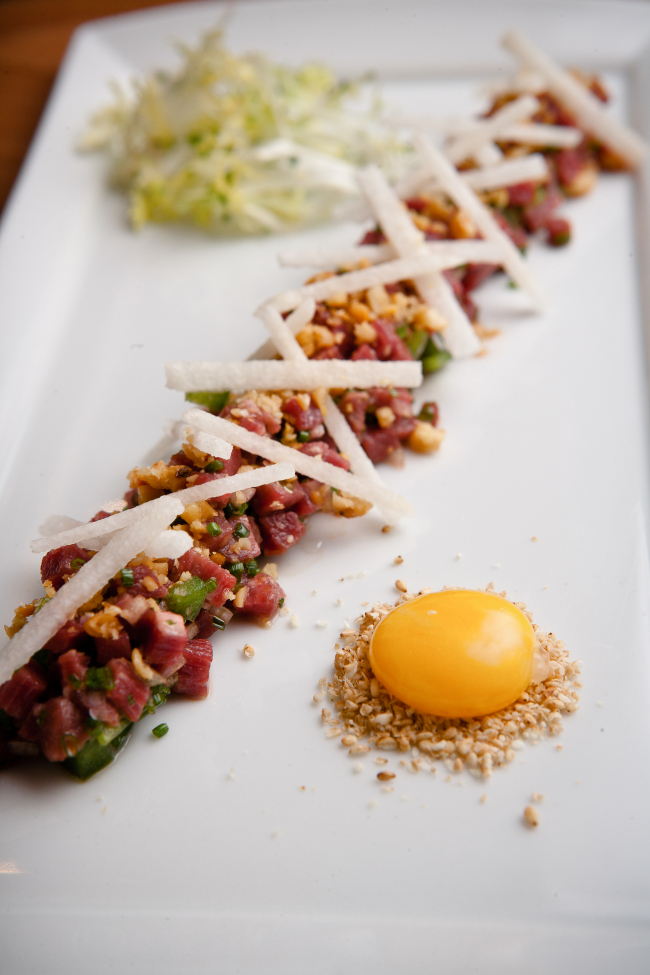
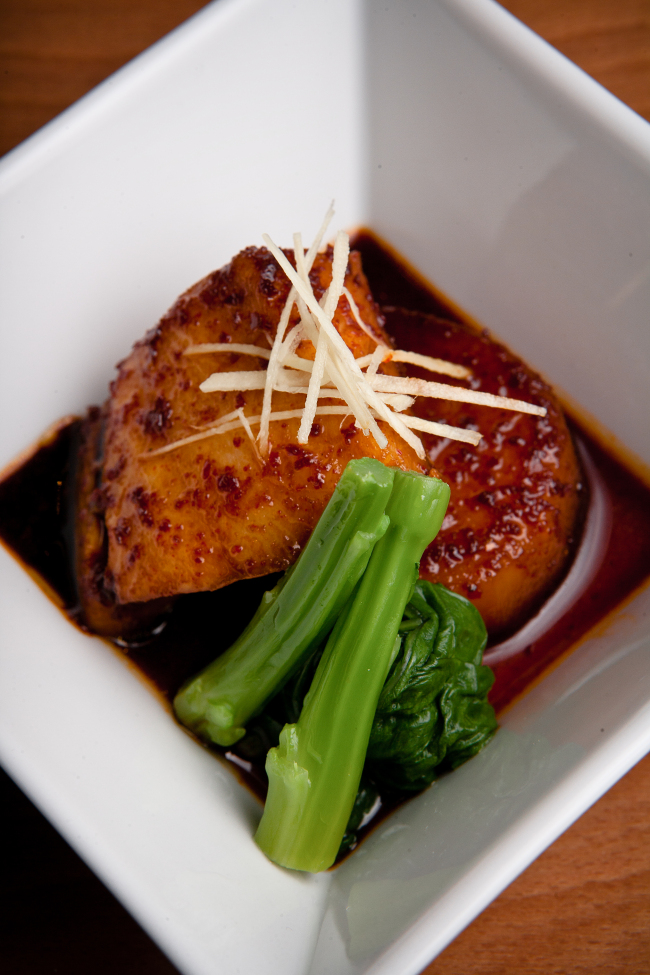
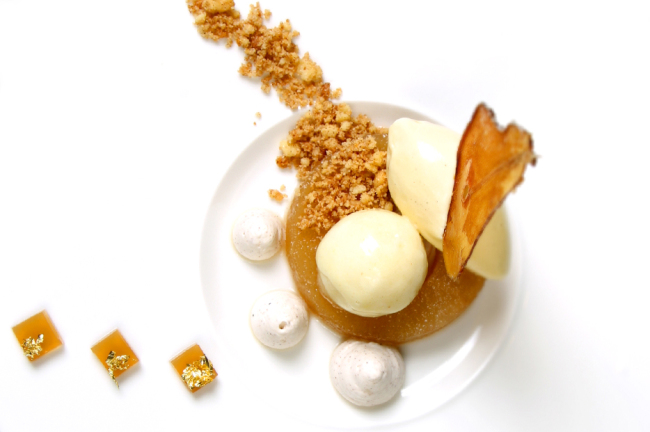
The most popular dishes are the Korean barbeque and the “Deconstructed Soo Jeong Kwa”, which as the title indicates, is a creative deconstruction of the traditional Korean punch, soo jeong kwa, made from persimmons, cinnamon and ginger. This dessert captures the essential flavors of the traditional drink from poaching Korean pear that sits below honey ginger ice cream and pear sorbet, decorated with cinnamon Chantilly cream.
This restaurant is highly recommended for first-timers who have never tried Korean food or if you are introducing Korean food to your coworkers for a clean, pleasant, authentic Korean experience.
5. Momofuku Ssäm Bar
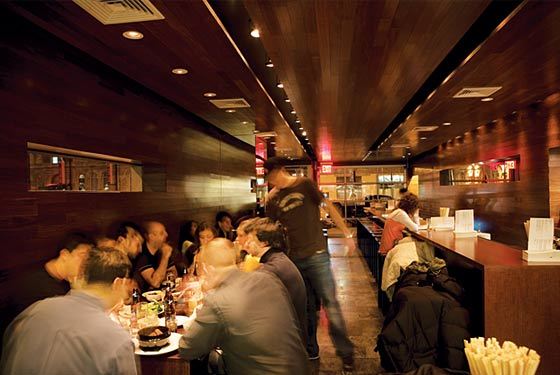
As one of celebrity chef David Chang’s restaurants located in the East Village, this Korean-Japanese restaurant first introduced New Yorkers to the idea of “ssäm”, which literally means “wrapped” in Korean.

Ssäm refers to a dish in Korean cuisine in which leafy vegetables such as lettuce or perilla leaves are used to wrap pieces of meat such as pork or beef with or without rice, depending on one’s preference, often added with a condiment known as ssamjang, a mixture of fermented red bean paste, gochujang and fermented soybean paste, doenjang.

Ssämbap or ssäm rice, has become a trendy and healthy way of eating in Korea since the early 2000s, and many restaurants in Korea specialize in ssämbap for customers who look to eat a large variety of vegetables with their meat.
Chang has reinvented ssäm to accommodate a wider range of customers by including different kinds of meat such as lamb, rotisserie chicken, pork, shrimp, rib, fish and duck to be wrapped in ssäm.

The best dish at Momofuku Ssäm Bar is the bo ssäm, which includes a whole slow cooked pork shoulder, a dozen oysters, two bowls of white rice, bibb lettuce, ssäm sauce, kimchi and ginger scallion sauce. Because the pork shoulder is cured overnight, then roasted for 6-8 hours, one must make a specific bo ssäm reservation in advance on the restaurant’s website.
For a one of a kind ssäm experience with your favorite kind of meat, make a stop in the village to Chef Chang’s Momofuku Ssäm Bar.
(Photo credit: Jungsik, Danji, Hangawi, Gaonnuri, Momofuku Ssäm Bar)
Kimchi, the quintessential Korean side dish, pickled and spiced cabbage, is now being sold in common bodegas as well as at larger supermarkets such as Whole Foods Market and Trader Joe’s.
One of the reasons for Korean food’s success is contributed to its appeal to both vegetarians and meat-lovers alike -- with the healthier, vegetarian dishes and with famous barbecue experience.
This growing awareness for Korean food allows chefs and restaurateurs in New York to experiment with different approaches, and now New York City offers a wide variety of Korean food, ranging from authentic to the more nouveau styles.
As a Korean-American who cannot live a single day without kimchi, being able to experience this trend of nouveau Korean food has been a real treat.
If you love Korean food and are open to more unique experiences in NYC, here are the five most innovative Korean restaurants in NYC you do not want to miss.
1. Jungsik

Jungsik Yim, chef-owner of Jungsik, is a Culinary Institute of America graduate who has spent his apprentice in the kitchens of Bouley and Aquavit. Here, Chef Yim introduces a reconstructed Korean cuisine through a more modern and French style.
Located between Hudson St. and Staple St. in the heart of Tribeca, the restaurant’s symmetrical, minimalistic, white decor allows for a more structured focus on experiencing the food itself, and with the immaculate service provided by the staff, and also by the general manager, Kyungmoon Kim, also a CIA alumni, the overall 9-course meal is truly a fascinating experience.
Many chefs run into the challenge of plating Korean food in a simple, elegant way, and Chef Yim has brilliantly overcome this challenge by deconstructing the realm of classic Korean plating, and has recreated his dishes in a French infused style, yet retaining the essential Korean flavors of every dish.

The most popular dish is the Sea Urchin Rice which sits on a seaweed puree resting on top of the lightly fried quinoa. The chopped kimchi along with the seaweed puree balance the thick flavors of the fresh sea urchin and the crispy quinoa.

Also, make sure to try Jungsik’s signature dessert, “Jang dok”, a very thick hazelnut cremeux that is shaped like the jangdok earthenware commonly used in Korean homes to be buried underground or left outside in a cool area for food to be kept fresh and well-preserved.
If you are looking to have a rare fine-dining experience at a Michelin two-star restaurant in New York City with your loved ones for a special occasion or if you just want to treat yourself, this restaurant is highly recommended for your next visit in NYC. For those who live in Korea, do not worry -- Chef Yim’s first restaurant is located in Seoul, which also has been nominated as one of the best restaurants in Asia.
2. Danji

Chef Hooni Kim, currently a celebrity judge on the third season of Master Chef Korea on Olive TV, is the chef-owner of Danji, a one-star Michelin restaurant located in Hell’s Kitchen.
Danji is the name of a common earthenware used among the more traditional Koreans, a smaller form of hangari. The restaurant’s name reflects the tapas style of smaller portions, and also to the overall theme of the coexistence of modern and traditional Korea.

The decor inside also resonates to this theme, with warm brown tones and modern lighting, with hints of traditional Korean remnants -- danji jars that sit above the polished wooden bar and the walls of the wooden and silver spoons used as room dividers.

The menu is also distinguished to meet this theme. On one side is a list of modern Korean dishes, such as the bossam and bulgogi beef sliders, and the other is a list of the traditional Korean dishes such as the steak tartare (yook hwe) and poached sablefish (eun-dae-gu jjo-rim). The modern dishes carry sweeter flavors, perhaps to appeal to a wider range of people who may be a little shy to explore the bolder Korean flavors. The traditional dishes preserve the Korean ingredients and also way of cooking -- the steak tartare (yook hwe) is served cold, seasoned with sesame oil and topped with lean rectangular slices of Korean pear, and also the sablefish is boiled with Korean radish in soy sauce with Korean red peppers.

If you want to experience dishes that transcend the boundaries of modern and traditional Korean cuisine in NYC, this is the restaurant for you. However, it does not take any reservations (unless you are a party of 6 or more) in advance. Don’t be alarmed to wait for a good 20 minutes upon arrival, especially on a Friday or a Saturday night.
3. Hangawi
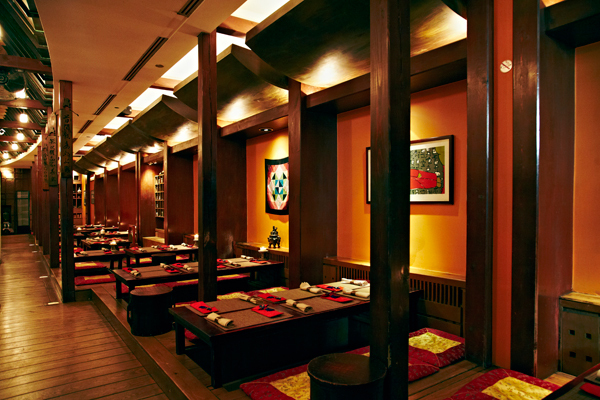
As you walk east, away from the busiest area on 32nd St. between Broadway and 5th Ave., you will be pleasantly surprised to find Hangawi, a hidden vegetarian gem in Koreatown.
Hangawi is one of the very few, and possibly only authentic Korean vegetarian restaurants in NYC.
The fun part of this restaurant, unlike any other restaurants near the area, is the temple-like decor inside, immediately creating a genuine, spiritual, and authentic atmosphere upon entering. The staff dressed in hanbok, Korean traditional clothing, kindly greet their guests at the door, asking them to remove their shoes. Then, the guests are led to a dimly lit dining area with low tables and cushioned seats. In Korea, it is common for restaurants to have guests remove their shoes, as the act of removing one’s shoes upon entering connotes respect and gratitude for others and their space.
The best dish to try is the crispy mushroom in sweet and sour sauce or mushroom tangsooyook, a vegetarian Korean version of the Chinese sweet and sour pork. Derived from a Chinese dish, tangsooyook is one of the most popular and common dishes at Korean-Chinese restaurants. The savory and juicy mushrooms are crisply fried and bathed in the sweet and sour sauce, and even if you are not a vegetarian, dishes like this along with the quiet, serene and spiritual experience will definitely make you want to come back for more.
4. Gaonnuri
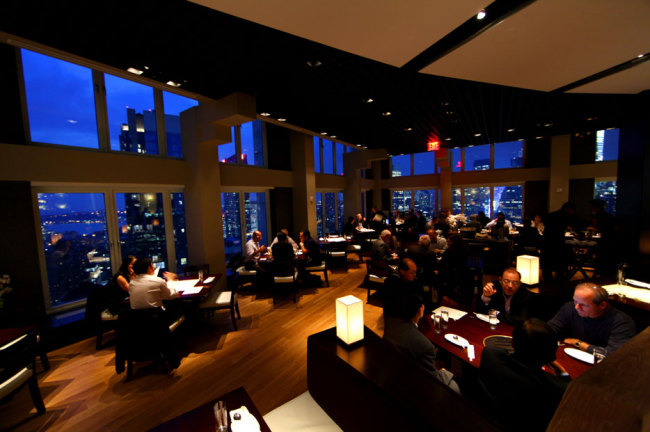
New York foodies are very hard to please. Obviously they look for delicious, high quality food, but they are always on a search to find something unique and exclusive. While many restaurants at Koreatown woo foodies with their authenticity and good food, some fail to provide this unique and exclusive experience due to a lack of good service and the proper ambience.
However, when Andy Sung, former architect, opened Gaonnuri in 2012, he envisioned a need for change -- to set a higher standard for authentic Korean restaurants at Koreatown in NYC.
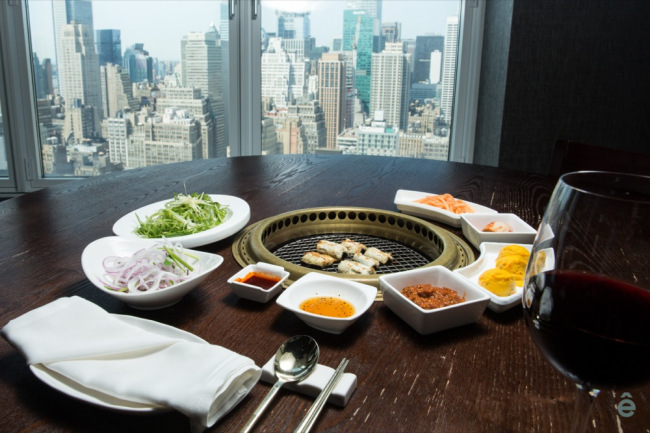
Located at the entrance of Koreatown on 32nd St., on the 39th floor of the building commonly known as the “Woori Bank building,” Gaonnuri introduces authentic Korean food in a upscale setting.
This restaurant is unique in that it is the only restaurant in NYC that offers high quality authentic Korean cuisine along with a phenomenal view of the Manhattan skyline. Guests can enjoy this view especially at night, with the city lights beaming through the large windows as they enjoy their food.
3. Hangawi

As you walk east, away from the busiest area on 32nd St. between Broadway and 5th Ave., you will be pleasantly surprised to find Hangawi, a hidden vegetarian gem in Koreatown.
Hangawi is one of the very few, and possibly only authentic Korean vegetarian restaurants in NYC.
The fun part of this restaurant, unlike any other restaurants near the area, is the temple-like decor inside, immediately creating a genuine, spiritual, and authentic atmosphere upon entering. The staff dressed in hanbok, Korean traditional clothing, kindly greet their guests at the door, asking them to remove their shoes. Then, the guests are led to a dimly lit dining area with low tables and cushioned seats. In Korea, it is common for restaurants to have guests remove their shoes, as the act of removing one’s shoes upon entering connotes respect and gratitude for others and their space.
The best dish to try is the crispy mushroom in sweet and sour sauce or mushroom tangsooyook, a vegetarian Korean version of the Chinese sweet and sour pork. Derived from a Chinese dish, tangsooyook is one of the most popular and common dishes at Korean-Chinese restaurants. The savory and juicy mushrooms are crisply fried and bathed in the sweet and sour sauce, and even if you are not a vegetarian, dishes like this along with the quiet, serene and spiritual experience will definitely make you want to come back for more.
4. Gaonnuri

New York foodies are very hard to please. Obviously they look for delicious, high quality food, but they are always on a search to find something unique and exclusive. While many restaurants at Koreatown woo foodies with their authenticity and good food, some fail to provide this unique and exclusive experience due to a lack of good service and the proper ambience.
However, when Andy Sung, former architect, opened Gaonnuri in 2012, he envisioned a need for change -- to set a higher standard for authentic Korean restaurants at Koreatown in NYC.

Located at the entrance of Koreatown on 32nd St., on the 39th floor of the building commonly known as the “Woori Bank building,” Gaonnuri introduces authentic Korean food in a upscale setting.
This restaurant is unique in that it is the only restaurant in NYC that offers high quality authentic Korean cuisine along with a phenomenal view of the Manhattan skyline. Guests can enjoy this view especially at night, with the city lights beaming through the large windows as they enjoy their food.

The most popular dishes are the Korean barbeque and the “Deconstructed Soo Jeong Kwa”, which as the title indicates, is a creative deconstruction of the traditional Korean punch, soo jeong kwa, made from persimmons, cinnamon and ginger. This dessert captures the essential flavors of the traditional drink from poaching Korean pear that sits below honey ginger ice cream and pear sorbet, decorated with cinnamon Chantilly cream.
This restaurant is highly recommended for first-timers who have never tried Korean food or if you are introducing Korean food to your coworkers for a clean, pleasant, authentic Korean experience.
5. Momofuku Ssäm Bar

As one of celebrity chef David Chang’s restaurants located in the East Village, this Korean-Japanese restaurant first introduced New Yorkers to the idea of “ssäm”, which literally means “wrapped” in Korean.

Ssäm refers to a dish in Korean cuisine in which leafy vegetables such as lettuce or perilla leaves are used to wrap pieces of meat such as pork or beef with or without rice, depending on one’s preference, often added with a condiment known as ssamjang, a mixture of fermented red bean paste, gochujang and fermented soybean paste, doenjang.

Ssämbap or ssäm rice, has become a trendy and healthy way of eating in Korea since the early 2000s, and many restaurants in Korea specialize in ssämbap for customers who look to eat a large variety of vegetables with their meat.
Chang has reinvented ssäm to accommodate a wider range of customers by including different kinds of meat such as lamb, rotisserie chicken, pork, shrimp, rib, fish and duck to be wrapped in ssäm.

The best dish at Momofuku Ssäm Bar is the bo ssäm, which includes a whole slow cooked pork shoulder, a dozen oysters, two bowls of white rice, bibb lettuce, ssäm sauce, kimchi and ginger scallion sauce. Because the pork shoulder is cured overnight, then roasted for 6-8 hours, one must make a specific bo ssäm reservation in advance on the restaurant’s website.
For a one of a kind ssäm experience with your favorite kind of meat, make a stop in the village to Chef Chang’s Momofuku Ssäm Bar.
(Photo credit: Jungsik, Danji, Hangawi, Gaonnuri, Momofuku Ssäm Bar)




No comments:
Post a Comment